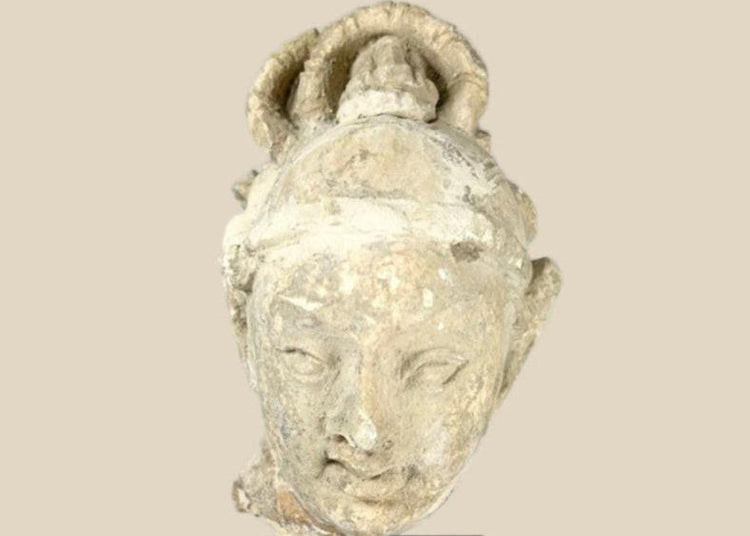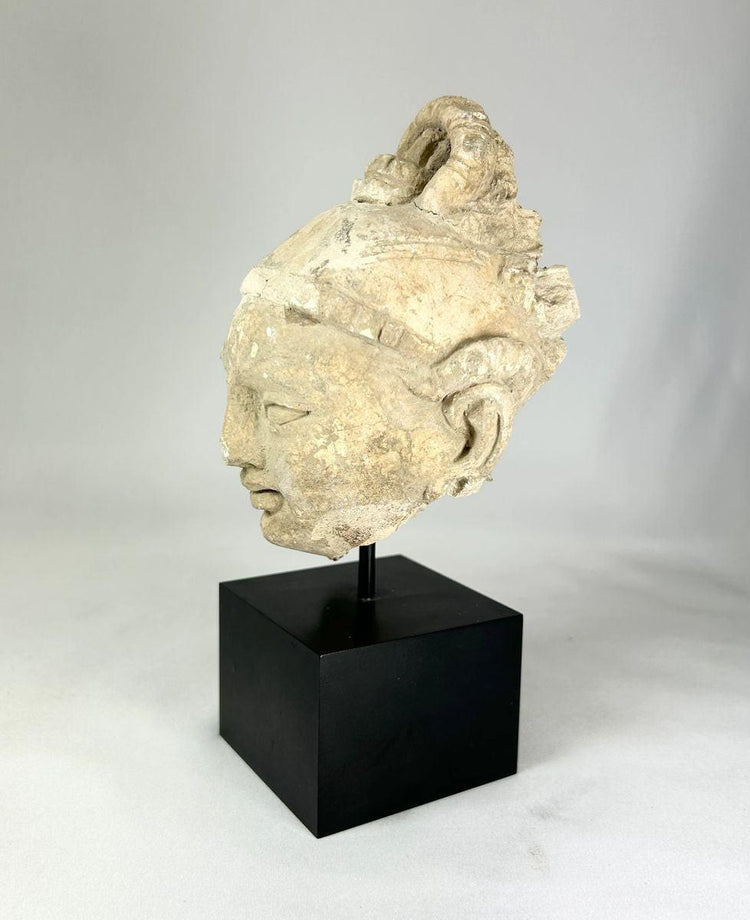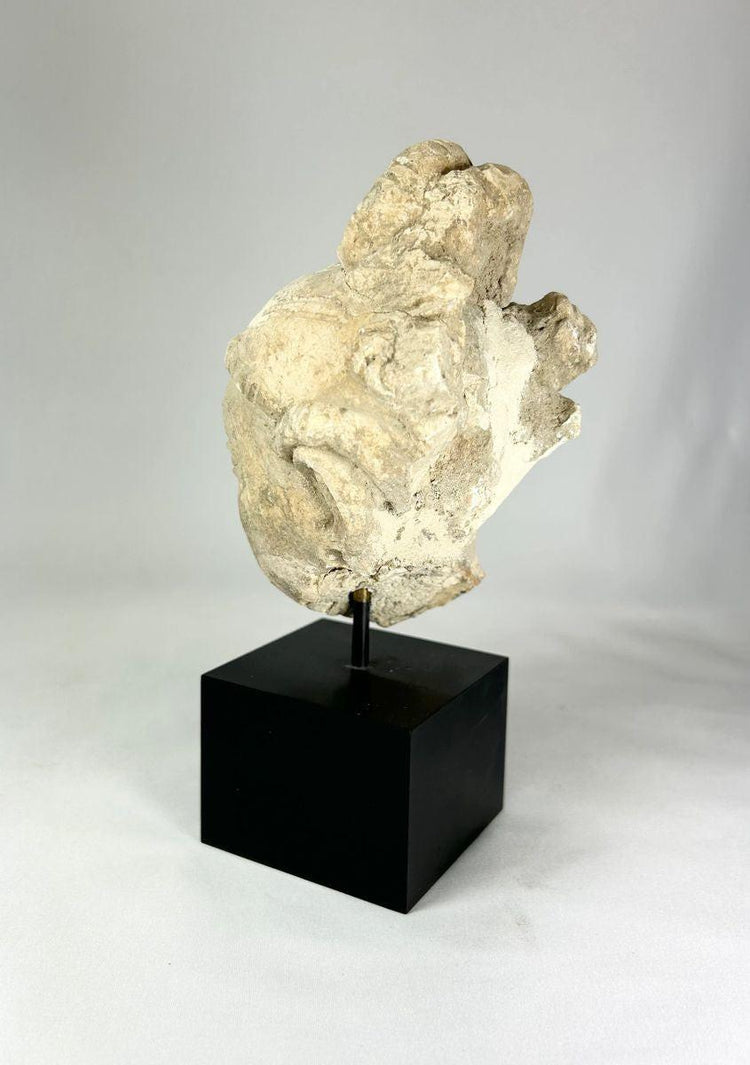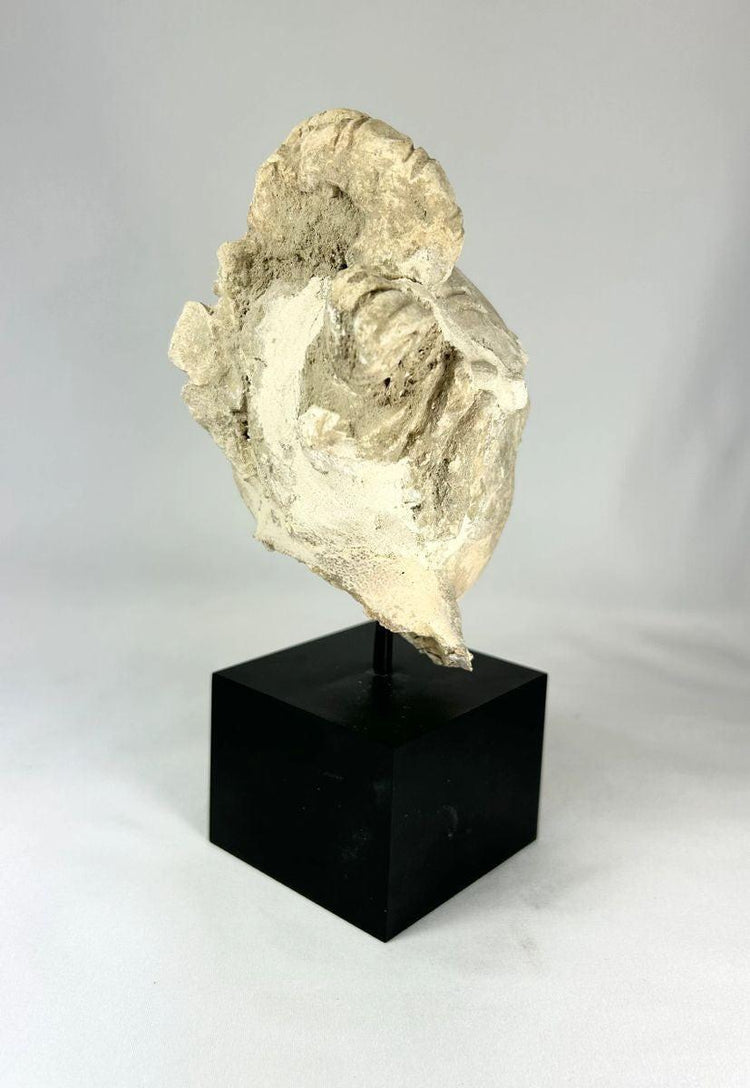Ancient Gandhara Stone Buddha Fragment | Circa 1st–5th Century AD Artifact
Description
More
Less
Historical Context & Origin
Region: Gandhara (modern-day Pakistan and Afghanistan)
Material: Carved stone
Period: 1st–5th Century CE
Description
This ancient stone head fragment originates from the Gandhara region, a cultural crossroads where Hellenistic and Buddhist traditions merged to form one of history’s most distinctive artistic styles. Carved with delicate precision, the fragment depicts a serene face with gentle eyes, a soft smile, and a stylized headpiece, hallmarks of Gandharan Buddhist art. The subtle Greco-Roman influences—seen in the idealized features and naturalistic treatment—are combined with Buddhist iconography to create a harmonious and spiritual presence.
Features
- Serene facial expression with delicate, idealized features
- Stylized headpiece characteristic of Gandharan Buddhist imagery
- Evidence of Greco-Roman influence in form and elegance
- Natural weathering and surface patina enhancing authenticity
- Mounted on a modern black display stand
Cultural Significance
The Gandhara region was a pivotal meeting point of East and West, where Indian religious traditions absorbed Greek artistic techniques brought by Alexander the Great’s successors. This fusion created an iconic Buddhist visual language that influenced depictions of the Buddha and Bodhisattvas for centuries. Sculptural fragments such as this were originally part of larger monastery decorations, stupas, or shrines, serving both devotional and didactic purposes. Today, they stand as rare witnesses to the cultural and spiritual exchanges that shaped early Buddhist art.
Condition
Well-preserved with fine facial details intact. Natural surface patina and weathering consistent with great age. Mounted on a later black stand for stability and display.
Dimensions (approximate)
Height: 7 in
Width: 2.5 in
Depth: 2.5 in
Age
1st–5th Century CE
Learn More
Discover More About The Art of Gandhara From The Metropolitan Museum of Art
View a similar Artifact in The Saint Louis Art Museum: Head of a Buddha
Description
Historical Context & Origin
Region: Gandhara (modern-day Pakistan and Afghanistan)
Material: Carved stone
Period: 1st–5th Century CE
Description
This ancient stone head fragment originates from the Gandhara region, a cultural crossroads where Hellenistic and Buddhist traditions merged to form one of history’s most distinctive artistic styles. Carved with delicate precision, the fragment depicts a serene face with gentle eyes, a soft smile, and a stylized headpiece, hallmarks of Gandharan Buddhist art. The subtle Greco-Roman influences—seen in the idealized features and naturalistic treatment—are combined with Buddhist iconography to create a harmonious and spiritual presence.
Features
- Serene facial expression with delicate, idealized features
- Stylized headpiece characteristic of Gandharan Buddhist imagery
- Evidence of Greco-Roman influence in form and elegance
- Natural weathering and surface patina enhancing authenticity
- Mounted on a modern black display stand
Cultural Significance
The Gandhara region was a pivotal meeting point of East and West, where Indian religious traditions absorbed Greek artistic techniques brought by Alexander the Great’s successors. This fusion created an iconic Buddhist visual language that influenced depictions of the Buddha and Bodhisattvas for centuries. Sculptural fragments such as this were originally part of larger monastery decorations, stupas, or shrines, serving both devotional and didactic purposes. Today, they stand as rare witnesses to the cultural and spiritual exchanges that shaped early Buddhist art.
Condition
Well-preserved with fine facial details intact. Natural surface patina and weathering consistent with great age. Mounted on a later black stand for stability and display.
Dimensions (approximate)
Height: 7 in
Width: 2.5 in
Depth: 2.5 in
Age
1st–5th Century CE
Learn More
Discover More About The Art of Gandhara From The Metropolitan Museum of Art
View a similar Artifact in The Saint Louis Art Museum: Head of a Buddha
You May Also Like






















